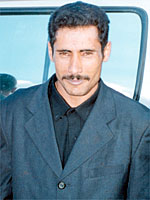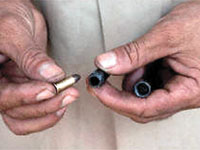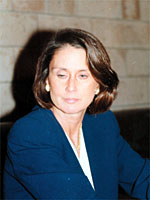
Yemenia Plane Hijacking Attempt and the Mysteries of Pen Guns & Fake IDs! [Archives:2001/05/Front Page]
January 29 2001


“Yemen has become a haven for market dealers of all weapons, from war tanks to the smallest pen guns imaginable,” a weapon dealer told Yemen Times.
On another level, Yemen Times followed up closely the developments in the case of the failed hijacking attempt by Jabir Ali Sattar of the Boing 727 Yemenia airplane, which took place a week ago. It was reported in many newspapers and news agencies that the hijacker was Mohammed Yahya Sattar, but Yemen Times learnt that this was a fake name used to mislead and confuse investigation teams. It was also revealed that Jabir got the fake identification card on the sixth of January, less than two weeks before the incident, which resulted in the interrogation of the two men who guaranteed him when he obtained his ID.
The issue of fake IDs is the second issue that raises a lot of concern. It was also reported that six Sana’a airport inspectors were detained for questioning as to how an armed hijacker boarded a flight carrying 91 people, including the U.S. ambassador to Yemen.
“It is not an irregular thing. Yemenis are being issued thousands of fake cards every year, and yet the government does nothing about it. But when an incident like this happens, the authorities start to wake up, then go back to sleep again later,” said a journalist who had looked into the question of fake IDs many times before.
This incident could help the government focus on two important issues for the sake of the country: law enforcement to prevent fake IDs, etc. and disarmament to limit the spread and use of weapons. Yemen Times is committed to follow the steps the government will take in this regard.

Just as the airplane landed, the emergency exits opened, and realizing the point of weakness of the hijacker in not knowing English, the captain told the passengers to flee the airplane through the emergency chutes, all in English, so that the hijacker did not know what was going on.
When the hijacker found out that the passengers had already fled the airplane, he turned crazy. “In one or one and half minutes, all the passengers had fled the plane. Only then did the hijacker realize what had happened and his temper rose to such a level that I thought he may indeed try to execute his threat (exploding the bomb), because he had been deceived twice. First when we landed in Djibouti, second when the passengers fled the plane.” Captain Anees Amer said.
Then the hijacker screamed, ” I am dead, I am dead, but I will explode this head.” Only then did the crewmembers jump to the rescue and spray foam from a fire extinguisher into the hijacker’s face and wrestle him to the ground. One crewmember was slightly injured by a shot from the hijacker’s small pen gun. Then it was all over.
No doubt, Captain Anees along with Female Captain Assistant Roza Mustafa were able to accomplish the remarkable task of saving the lives of more than 95 passengers on board during the flight of horror IY 448 from Sanaa to Taiz. The passengers on board included the US Ambassador, H.E. Barbara Bodine and the Yemeni Ambassador to the USA, H.E. Abdulwahhab Al-Hajri, along with members of a US delegation and US embassy staff members, including the Political Attach of the US Embassy, Mr. Steve Walker.
Interestingly, it was later reported that an airport security source said that the hijacker set his cigarettes, a bottle of water and the pen gun on the table next to the walk through XÐray machine so that the gun was not scanned.
The bag in which the man claimed to have explosives was later determined to be packed with personal belongings and toys.
——
[archive-e:05-v:2001-y:2001-d:2001-01-29-p:./2001/iss05/front.htm]


